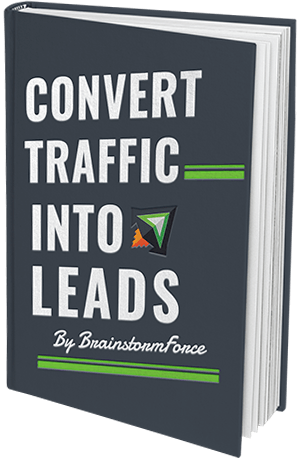The topic of CAC (Customer Acquisition Cost) and LTV (Lifetime Value) optimization is a key issue for any marketing manager who wants to maximize ROI and allocate budget efficiently. Let’s discuss it step-by-step so that it is clear how to use LTV:CAC models to make strategic decisions.
CAC (Customer Acquisition Cost) – Cost of acquiring a customer
CAC is the cost you incur to acquire one new customer. It is calculated by dividing total marketing expenses by the number of customers acquired.
- Formula:CAC=Total marketing expensesNumber of customers acquiredCAC=Number of customers acquiredTotal marketing expenses.
- Example: If you spent £100,000 on marketing and acquired 1,000 customers, the CAC is £100.
LTV (Lifetime Value) – Customer lifetime value
LTV is the total value that a customer generates over the entire period of cooperation with your company. It is calculated by multiplying the average order value by the frequency of purchases and the average time of cooperation.
- Formula:LTV=Average order value×Purchase frequency×Average collaboration timeLTV=Average order value×Purchase frequency×Average collaboration time
- Example: If a customer spends PLN 200 per month on average, and the cooperation lasts 2 years, the LTV is PLN 4800.
Why is LTV:CAC important?
The ratio of LTV to CAC shows whether investments in customer acquisition are profitable. The ideal ratio is 3:1 – this means that a customer generates three times as much revenue as it costs to acquire.
How to use LTV:CAC models for budget allocation?
Step 1: Calculate CAC and LTV for each channel and product
To allocate budget effectively, you need to know the CAC and LTV for each marketing channel and product.
- How to do it:
- Collect data on marketing expenditures and number of customers acquired for each channel (e.g. Google Ads, Facebook Ads, email marketing).
- Calculate LTV for customers acquired through each channel.
- Example: If Google Ads acquired 500 customers with a spend of PLN 50,000, the CAC is PLN 100. If the LTV of these customers is PLN 3,000, the LTV:CAC ratio is 30:1.
- Tools: Google Analytics, Excel, Tableau.
Step 2: Compare LTV:CAC ratios
Compare LTV:CAC ratios for different channels and products to understand which are the most profitable.
- How to do it:
- Create a table with channels/products, their CAC, LTV and LTV:CAC ratio .
- Identify the channels/products with the highest LTV:CAC ratios .
- Example:CACLTV channel LTV:CAC Google Ads100£3000£30:1 Facebook Ads150£2500£16.7:1 Email marketing50£1000£20:1
Step 3: Allocate budget to the most profitable channels
Focus on channels and products that have the highest LTV:CAC ratios .
- How to do it:
- Increase the budget for channels with high LTV:CAC .
- Reduce or eliminate spending on channels with low LTV:CAC .
- Example: If Google Ads has an LTV:CAC ratio of 30:1 and Facebook Ads has a ratio of 16.7:1, increase the budget for Google Ads.
- Tools: Excel, Tableau, project management tools.
Step 4: Monitor and optimize
Regularly monitor performance and adjust budget allocation based on current data.
- How to do it:
- Conduct monthly performance reviews.
- Adjust budget in response to changing market conditions.
- Example: If you notice that email marketing is starting to yield higher LTV:CAC , increase the budget for it.
- Tools: Google Analytics, Tableau, report automation tools.
Advanced CAC and LTV optimization techniques
1. customer segmentation
Not all customers are created equal. Segment customers based on their value and adjust marketing strategies.
- How to do it:
- Identify high LTV customer segments.
- Focus on attracting customers from these segments.
- Example: If corporate customers have a higher LTV than individual customers, increase the budget for channels that attract corporate customers.
- Tools: CRM (e.g. Salesforce), data analysis tools (e.g. Tableau).
2. purchase path optimization
Improving the purchase path can increase LTV and decrease CAC.
- How to do it:
- Optimize your website for conversions.
- Simplify the buying process.
- Example: If you notice a lot of people abandoning the shopping cart, implement email reminders.
- Tools: Google Analytics, A/B testing tools (e.g. Optimizely).
3. loyalty programs
Loyalty programs can increase LTV by encouraging customers to make more frequent purchases.
- How to do it:
- Introduce loyalty programs that reward customers for purchases.
- Example: A points program where customers collect points for every £100 spent.
- Tools: Loyalty management platforms (e.g., Smile.io).
4. retargeting
Retargeting can reduce CAC by reminding potential customers about your brand.
- How to do it:
- Use retargeting to reach people who visited your site but did not make a purchase.
- Example: Facebook and Google Display Network retargeting campaigns.
- Tools: Facebook Ads, Google Ads.
Summary
Optimizing CAC and LTV is a key issue for effective marketing budget management. Key steps include calculating CAC and LTV for each channel and product, comparing LTV:CAC ratios, and allocating budget to the most profitable channels. Advanced techniques such as customer segmentation, purchase path optimization, loyalty programs and retargeting can further increase efficiency.
Tools for calculating and analyzing CAC and LTV
The technical aspects of optimizing CAC (Customer Acquisition Cost) and LTV (Lifetime Value), let’s delve into the tools, data analysis methods and processes that will help you put these strategies into practice. We’ll discuss everything step-by-step so you can effectively manage your budget and maximize ROI.
1. Google Analytics
Google Analytics is a powerful tool for tracking user behavior and analyzing campaign effectiveness.
- How to use:
- Track conversions and attribute them to specific marketing channels.
- Use “Attribution Modeling” to understand which channels have the greatest impact on customer acquisition.
- Example: you can see how many customers you acquired through Google Ads and how many through Facebook Ads.
- Useful reports:
- Acquisition Report: Shows where your customers are coming from.
- Behavior Flow: Shows customers’ purchase paths.
2. CRM (Customer Relationship Management)
CRM systems such as Salesforce, HubSpot and Zoho help track customer interactions and calculate LTV.
- How to use:
- Collect data on customer purchases, frequency of purchases, and duration of cooperation.
- Calculate LTV based on customer purchase history.
- Example: In Salesforce, you can create a report that shows the average order value and frequency of purchases.
- Useful features:
- Sales Analytics: Analyze sales and LTV.
- Customer Segmentation: segment customers based on their value.
3 Tableau/Power BI
Tableau and Power BI are data visualization tools that help with CAC and LTV analysis.
- How to use:
- Import data from Google Analytics, CRM and other sources.
- Create dashboards that show CAC, LTV and LTV:CAC ratios for different channels and products.
- Example: In Tableau, you can create a visualization that shows how CAC changes over time for each channel.
- Useful features:
- Data Blending: combine data from different sources.
- Real-Time Dashboards: Monitor performance in real time.
4. Excel/Google Sheets
Excel and Google Sheets are essential tools for calculations and data analysis.
- How to use:
- Create spreadsheets with data on marketing expenditures, number of customers acquired and value of customers.
- Use formulas to calculate CAC, LTV and LTV:CAC ratios .
- Example: you can create a spreadsheet that automatically calculates CAC and LTV for each channel.
- Useful formulas:
- CAC:
=Całkowite wydatki marketingowe/Liczba pozyskanych klientów - LTV:
=Średnia wartość zamówienia*Częstotliwość zakupów*Średni czas współpracy
- CAC:
CAC and LTV optimization process
Step 1: Gather and prepare data
Before you start analyzing, you need to collect and prepare data.
- How to do it:
- Collect marketing spend data from all channels.
- Collect data on the number of customers acquired and their purchases.
- Clean up the data and remove errors.
- Tools: Excel, Google Sheets, Tableau.
Step 2: Calculate CAC and LTV
Calculate CAC and LTV for each channel and product.
- How to do it:
- Use formulas in Excel or Google Sheets.
- Import data into Tableau or Power BI to create visualizations.
- Example: If you spent PLN 50,000 on Google Ads and acquired 500 customers, the CAC is PLN 100. If the average order value is PLN 200, the frequency of purchases is 12 times a year, and the average time of cooperation is 2 years, the LTV is PLN 4800.
Step 3: Analyze LTV:CAC ratios
Compare LTV:CAC ratios for different channels and products.
- How to do it:
- Create a table or dashboard that shows CAC, LTV and LTV:CAC ratios .
- Identify channels and products with the highest LTV:CAC ratios .
- Example:ChannelCACLTVLTV:CACGoogle Ads100£3000£30:1Facebook Ads150£2500£16.7:1E-mail marketing50£1000£20:1
Step 4: Allocate budget and optimize
Focus on channels and products with the highest LTV:CAC ratios .
- How to do it:
- Increase the budget for channels with high LTV:CAC .
- Reduce or eliminate spending on channels with low LTV:CAC .
- Example: If Google Ads has an LTV:CAC ratio of 30:1 and Facebook Ads has a ratio of 16.7:1, increase the budget for Google Ads.
- Tools: Excel, Tableau, project management tools.
Advanced data analysis techniques
1. Attribution Modeling
Attribution Modeling helps you understand which channels have the greatest impact on customer acquisition.
- How to do it:
- Use Google Analytics to create attribution models.
- Analyze which channels are most effective at different stages of the purchase path.
- Example: you can see that Facebook Ads are effective at the awareness stage, and Google Ads at the conversion stage.
2. cohort analysis
Cohort Analysis allows you to analyze the behavior of groups of customers over time.
- How to do it:
- Divide customers into groups (cohorts) based on acquisition date.
- Analyze how different cohorts behave over time (e.g., purchase frequency, LTV).
- Example: you can see that customers acquired in January have a higher LTV than those acquired in June.
3. Predictive Analytics
Predictive Analytics uses AI and machine learning to predict future customer behavior.
- How to do it:
- Use tools such as Google Analytics 360, Salesforce Einstein.
- Predict future LTV based on historical data.
- Example: you can predict that customers who have made a first purchase of more than PLN 500 will have a higher LTV.
Summary
Optimizing CAC and LTV requires precise planning, data analysis and flexibility. Key tools include Google Analytics, CRM, Tableau and Excel. Advanced techniques such as Attribution Modeling, Cohort Analysis and Predictive Analytics can further increase efficiency.




